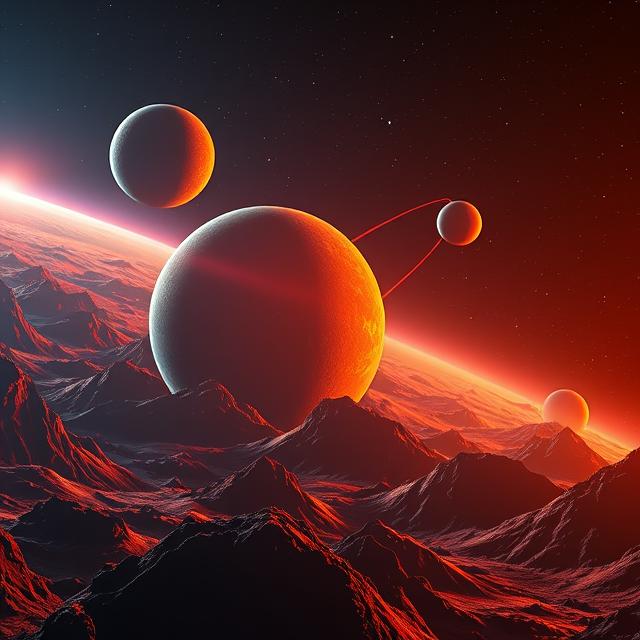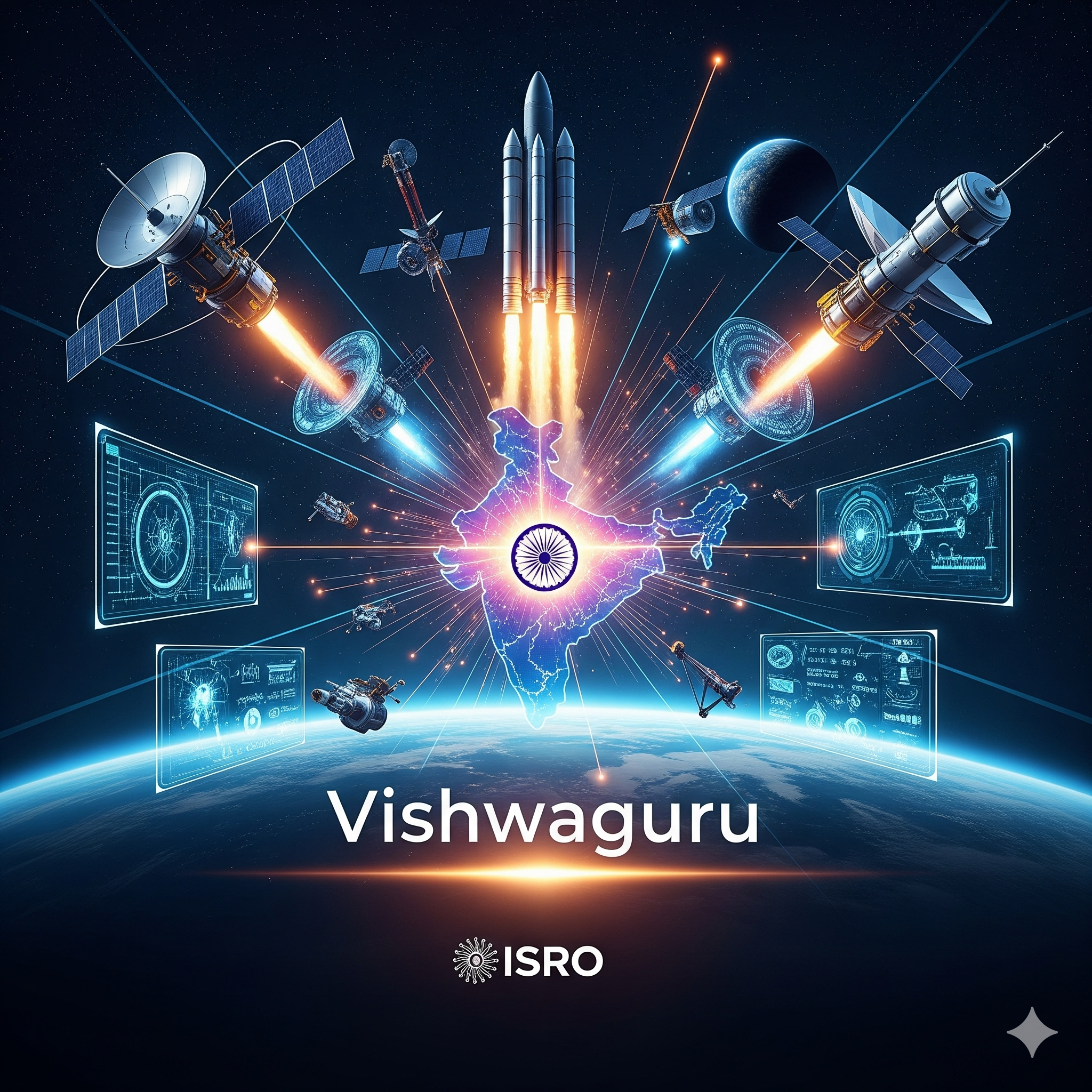As Earth’s population continues to grow and environmental challenges multiply, the concept of establishing human settlements beyond our home planet is gaining increasing relevance. Interplanetary colonization—once the domain of science fiction—is rapidly evolving into a realistic scientific and strategic endeavor. Among the celestial bodies in our solar system, the Moon and Mars stand out as the most promising candidates for human colonization. This article explores the scientific, technological, geopolitical, and ethical aspects of establishing human colonies on the Moon and Mars, focusing on the feasibility, potential benefits, and challenges involved.
1. Introduction: Why Colonize Other Worlds?
The desire to colonize other planets is driven by a mix of scientific curiosity, survival strategy, and technological ambition. Key motivations include:
- Planetary Backup: Creating a backup for humanity in case of catastrophic events on Earth (nuclear war, pandemics, climate change, asteroid impact).
- Resource Utilization: Tapping into extraterrestrial resources (minerals, water ice, solar energy).
- Scientific Advancement: Enabling deep space exploration and expanding human knowledge.
- Technological Innovation: Pushing the boundaries of engineering, robotics, and life support systems.
2. Why the Moon and Mars?
The Moon: Earth’s Closest Neighbor
- Proximity: Only ~384,000 km from Earth, reachable in about 3 days.
- Low Gravity: About 1/6th of Earth’s gravity; helpful for launching deep space missions.
- Water Ice: Detected at the lunar poles, essential for life support and fuel production.
- Stable Location for Observatories: Ideal for radio astronomy due to lack of atmosphere.
Mars: Earth’s Distant Cousin
- Day Length: A Martian day (~24.6 hours) is similar to Earth’s.
- Atmosphere: Thin (mostly CO₂), but offers potential for greenhouse-based agriculture.
- Water Ice Reserves: Present under the surface and at poles.
- Terraforming Potential: Theoretical possibility of modifying Mars’ environment to support life.
3. The Moon as a Stepping Stone
3.1 Lunar Bases and Research Stations
Several space agencies have outlined plans to build permanent lunar bases:
- NASA’s Artemis Program aims to return humans to the Moon and establish a base by the 2030s.
- China’s Chang’e Missions are exploring lunar south pole regions for long-term habitation.
- Russia and ESA have proposed international lunar villages.
3.2 Lunar Habitats and Infrastructure
- Habitat Design: Inflatable modules, underground shelters, and 3D-printed structures using lunar regolith are being considered.
- Energy Sources: Solar power arrays near the poles for continuous sunlight.
- Communication: Satellite networks and lunar relays for Earth connectivity.
3.3 Uses of the Moon
- Fuel Depot: Producing hydrogen and oxygen from lunar water for deep space missions.
- Staging Point: Launching interplanetary missions with less energy due to lower gravity.
- Scientific Research: Studying lunar geology and early solar system history.
4. Mars Colonization: The Bigger Leap
4.1 Mars Mission Roadmaps
Key players in the race to Mars colonization:
- NASA: Human mission planned in the 2030s.
- SpaceX: Elon Musk’s Starship program aims to send humans to Mars by late 2020s.
- ISRO & ESA: Long-term plans under consideration.
4.2 Martian Settlement Concepts
- Surface Habitats: Pressurized living modules with radiation shielding.
- Subsurface Living: Using Martian lava tubes to shield against radiation and micrometeorites.
- Local Resources: In-situ resource utilization (ISRU) to extract water, oxygen, and building materials.
4.3 Food, Water, and Atmosphere
- Water Extraction: Melting ice or extracting from hydrated minerals.
- Agriculture: Growing food in controlled environments using Martian soil (with amendments).
- Oxygen Generation: Using electrolysis and CO₂ converters like NASA’s MOXIE (tested on Perseverance rover).
5. Technological Challenges
5.1 Radiation Exposure
Both the Moon and Mars lack magnetic fields, exposing inhabitants to cosmic rays and solar radiation. Solutions include:
- Thick shielding using regolith
- Water walls
- Underground habitats
5.2 Life Support Systems
Colonies must maintain:
- Oxygen and carbon dioxide balance
- Water recycling systems
- Temperature regulation in extreme environments
5.3 Energy Generation
- Solar Power: Most feasible, though efficiency is lower on Mars due to distance from the Sun.
- Nuclear Reactors: Mini reactors like NASA’s Kilopower can provide reliable energy.
5.4 Transport and Communication
- Reusable Rockets: Critical for cargo and crew movement (e.g., SpaceX Starship).
- Delay in Signals: Communication with Mars involves a delay of 4–24 minutes one-way.
6. Ethical and Legal Considerations
6.1 Planetary Protection
- Avoid contaminating pristine extraterrestrial environments with Earth microbes.
- Prevent harmful biological exchange between Earth and other worlds.
6.2 Ownership and Governance
The Outer Space Treaty (1967) prohibits any nation from claiming celestial bodies, but commercial exploitation and private ownership are gray areas.
6.3 Societal Issues
- Who governs a colony?
- What laws apply?
- How are resources shared?
Creating interplanetary governance frameworks will be crucial as settlements evolve.
7. Psychological and Social Aspects
7.1 Isolation and Confinement
Astronauts will face long-duration missions, social isolation, and confined living spaces—potentially leading to psychological stress.
7.2 Cultural Dynamics
Future colonies may develop unique cultures and identities, raising questions about nationality, citizenship, and values.
7.3 Education and Economy
- How will children be raised in low gravity?
- What kind of education and economy will exist in a Mars or Moon colony?
These issues are vital for sustainable interplanetary life.
8. Economic and Strategic Importance
8.1 Space Economy Expansion
- Moon and Mars colonies can fuel growth in space mining, tourism, manufacturing, and communications.
- New markets for robotics, AI, life sciences, and construction technologies will emerge.
8.2 Geopolitical Influence
Nations that lead in colonization may gain significant strategic and economic advantages, influencing Earth politics and global power dynamics.
8.3 Job Creation and Innovation
- Development of space settlements will create jobs in engineering, software, biotech, space law, and space agriculture.
- Technologies developed for colonization can benefit Earth-based industries.
9. India’s Role in Interplanetary Exploration
9.1 ISRO’s Contributions
- Chandrayaan Missions: Paving the way for lunar exploration.
- Gaganyaan: India’s human spaceflight program.
- Mangalyaan (Mars Orbiter Mission): Proved India’s capability in interplanetary missions.
9.2 Future Prospects
- India can contribute to affordable lunar and Martian infrastructure.
- Collaboration with NASA, ESA, Roscosmos, and JAXA can accelerate colonization goals.
- Promoting startups like Skyroot and Agnikul to develop space infrastructure.
10. The Road Ahead: Vision for Humanity
Colonizing the Moon and Mars will not be a single event but a gradual evolution over decades. It requires:
- Global cooperation
- Sustained funding
- Ethical frameworks
- Technological breakthroughs
The journey will be filled with setbacks, but the long-term vision—a multi-planetary civilization—could ensure humanity’s survival and prosperity beyond Earth.
Key Takeaways
- Moon and Mars are the most feasible locations for the first human colonies.
- Moon will serve as a testbed and launchpad, while Mars offers long-term settlement opportunities.
- Challenges include radiation, life support, energy, psychology, and governance.
- Progress depends on global cooperation, innovation, and ethical considerations.
- India, with ISRO and a growing space ecosystem, is well-positioned to contribute to interplanetary colonization.
Conclusion
Interplanetary colonization is no longer a distant dream; it is an emerging reality grounded in science, ambition, and necessity. As humanity moves into the space age, the Moon and Mars will serve as the first chapters in our cosmic expansion. These efforts will redefine what it means to be human—not just as inhabitants of Earth, but as a spacefaring species.




